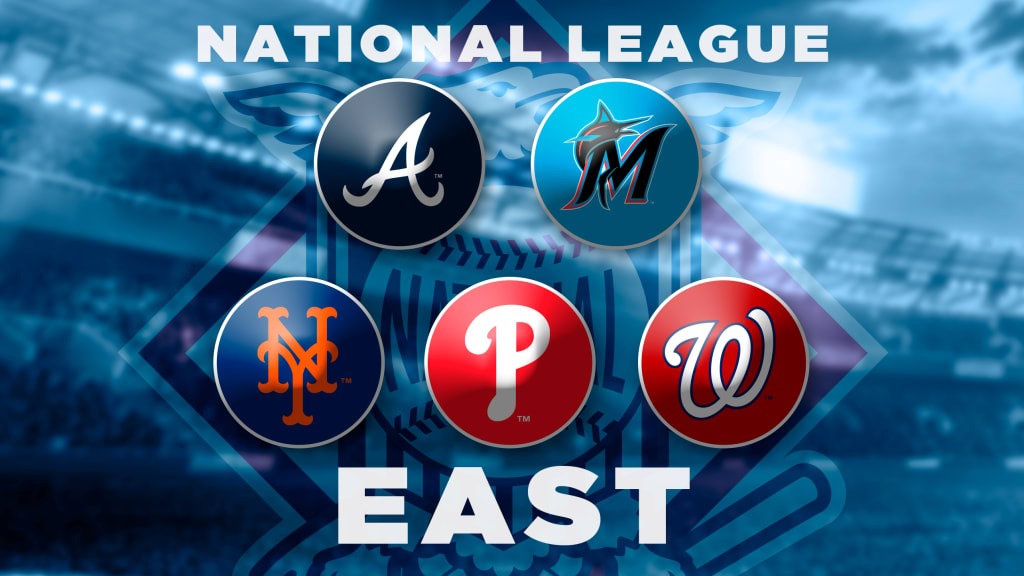
Pitchers aren't the only ones with a cannon for an arm.
Across the National League East, infielders and outfielders alike neutralize the opposition on the basepaths with strong and accurate throws.
Whether backed by Statcast data, assist totals or anecdotal evidence, clubs know not to try for an extra base on certain players.
This week, MLB.com asked its beat reporters to choose which player on the team they cover has the best throwing arm. Here are the results:
Braves: Ronald Acuña Jr.
Johan Camargo's arm has drawn attention since his days as a Spring Training non-roster invitee taking infield alongside Andrelton Simmons. But while Camargo has the best arm among Atlanta's infielders, Acuña boasts not only the team's best arm, but also arguably the best among all MLB outfielders. Acuña's arm could become even more of a weapon now that he is slated to be entrenched in right field. He recorded four assists over 199 2/3 innings in right field last year. That's one every 49.9 innings. The Phillies' Bryce Harper recorded an assist once every 101.4 innings while leading all MLB right fielders with 13 assists in 2019. -- Mark Bowman
Marlins: Brian Anderson
The Marlins claim they are keeping Anderson at his natural position, which is third base. He can certainly handle the hot corner, but right field is where he really showed off his arm strength. From 2018-19, he split time between the two spots, and there is plenty of anecdotal and statistical evidence to back the claim that Anderson can throw with the best of them. According to Statcast, Anderson had throws from the outfield tracked at 99.1 mph and 95.3 mph against the Dodgers on May 16, 2018. Neither resulted in an out, but they served as a reminder of his arm. On Aug. 3, 2019, at Tampa Bay, Anderson nabbed Austin Meadows at the plate on a throw from right field tracked at 97.1 mph. The ball carried 227 feet. There's also a throw he made against the Braves on May 12, 2018, when Freddie Freeman was out easily trying to go from first to third on a single to right. There is no Statcast reading on the throw, but the look of disbelief on Freeman's face told the story. -- Joe Frisaro
Mets: Yoenis Céspedes
The health of Céspedes' legs may remain uncertain following multiple heel surgeries and a fractured right ankle, but the health of his right arm most certainly does not. In February and March, Céspedes was a frequent sight during defensive drills in Port St. Lucie, Fla., unleashing throws that looked indistinguishable from those during his prime. A Gold Glove Award winner in 2015, Céspedes has annually rated highly on FanGraphs’ ARM metric, which measures how many runs above average an outfielder saves by preventing runners from advancing.
Now that Juan Lagares is gone from Flushing, Céspedes possesses the strongest arm in the Mets’ clubhouse. The only question is whether he'll have a chance to use it, now 22 months removed from his last big league game, or if his leg issues will keep him limited to a designated-hitter role (or even off the field altogether). -- Anthony DiComo
Nationals: Victor Robles
Turn your head, and you might miss an assist from Robles. The rookie ranked fourth among outfielders and first among center fielders with 12 outfield assists last season. He tallied them in speedy fashion, too. Statcast tracked 27 throws of at least 99.5 mph in 2019. Three of those came from the arm of the NL Gold Glove Award finalist -- 100.6 mph (July 17), 99.8 mph (Aug. 27) and 99.5 mph (Aug. 12), the last of which was the fifth-fastest assist of the year. Additionally, Robles followed up that blazing assist with a 97.3 mph throw to record another one the next night. Looking at average "max effort" arm strength (the average of a fielder's top 10 percent of throws to isolate plays where he is giving full effort), and Robles is fourth on the '19 season leaderboard at 95.9 mph. -- Jessica Camerato
Phillies: J.T. Realmuto
Realmuto earned his first Gold Glove Award last year based on an incredible season behind the plate. According to Statcast, he improved his pitch framing with the Phillies (seventh in MLB in strike rate), which got some attention, and he had the best pop time (1.88 seconds) in the Majors. But it was Realmuto's rocket right arm that separated him from the pack. His best throws averaged 88.4 mph, which ranked second among catchers only to the Padres' Francisco Mejía (88.6 mph). The combination of Realmuto's arm strength and pop time made him dangerous to run on, giving the Phillies a huge weapon in defending the running game. -- Todd Zolecki


